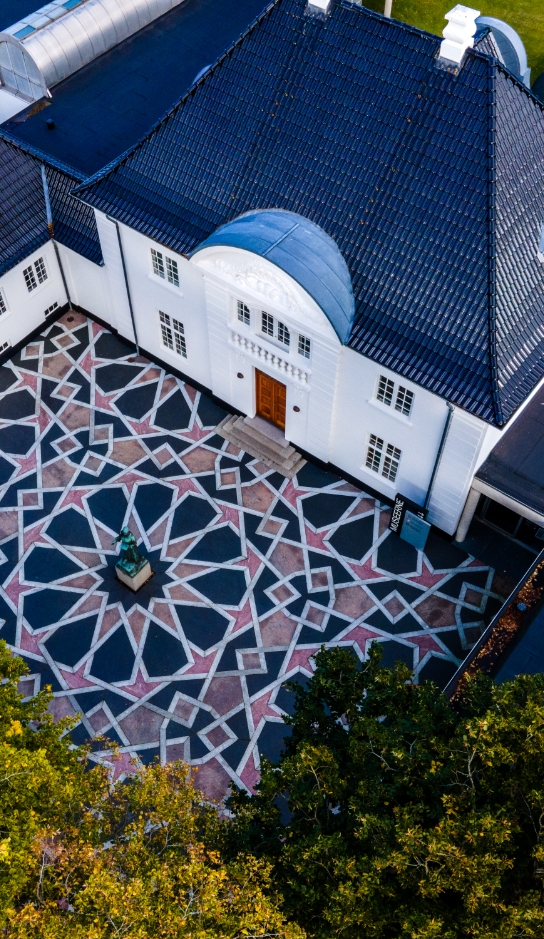Olivia Holm-Møller - Etchings
Collection
Olivia Holm-Møller’s (1875-1970) etchings are among the highlights of 20th-century Danish art. Holstebro Kunstmuseum owns prints of the majority of the more than 200 etchings, around one-third of which have been selected for this exhibition.
Olivia Holm-Møller’s etchings are drypoint etchings, etched directly onto zinc sheets. The earliest of these exist solely as her own, somewhat non-sophisticated prints, while her later etchings also were printed professionally in 1961.
The approximately 200 different etchings were not created continuously throughout the years. Besides a small number, and by current assessment, they can be chronologically divided into three groups: a small group of tentative etchings from 1908-09, a substantial group including several masterpieces from approximately 1934, and a group of around one-tenth which are motifs from journeys made in 1949-51, mostly from Egypt.
Motifs
The straightforwardly incised landscapes, portraits, animals and working people from her hometown of Homå on Djursland in 1934 are a monument to rural life, in accordance with a series depicting bathers in the North Sea at Søndervig from the same year, which stands as a tribute to the joy and life underneath the sun.
Their defined range of motifs is less complex than that of her more serious paintings from the 1930s and 40s. But their narratives often contain an astonishing and rarely-seen monumentality in the small format – as if Olivia Holm-Møller, in the razor-sharp drawings onto the zinc plates, has worked freely and without any weight of expectations, neither from herself nor from the surrounding world.
On par with the greatest
An entire worldview can lie hidden in each of the small etchings. With a minimum of lines, Olivia Holm-Møller captures the earthbound life of the countryside by a two-horse carriage at harvest time, superbly drawn, convincing and yet without realism, but with a clarity and ease of her own that is on par with the greatest. In the same manner as she is expresses decades of emancipation and zest for life in a simple depiction of two young women walking along the shore with the wind in their hair.
Book release
The exhibition is accompanied by the book Olivia Holm-Møller – Raderinger og kunstnerliv (Olivia Holm-Møller – Etchings and Artistic Life) by art historian Dr. Lennart Gottlieb. In the book, the etchings are described and interpreted in the context of the changes in Olivia Holm-Møller’s approach to the people and the world throughout an extraordinarily long life as an artist, initially as a sculptor and then, especially, as a painter. All accompanied by a wealth of never-before-seen photographs from the albums of Holm-Møller and her closest relatives.
Monographs and exhibition catalogues have been published on Olivia Holm-Møller’s art from the early 1940s to the latest years, but this book is the first more in-depth look at her art. The book is published by Holstebro Kunstmuseum on commission from Forlaget Frydenlund.
The exhibition and book is supported by:
"Little is needed for it to succeed, and Olivia Holm-Møller's landscapes also become etched in the viewer's mind. Some horizontal lines create the contours of a landscape, which she sparsely populates with trees and bushes, livestock in fields and perhaps a small house that imperceptibly presses down on the ground.”
Torben Weirup
Review for the Danish newspaper, Kristeligt Dagblad


